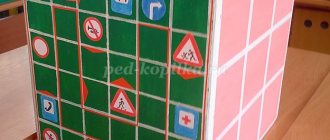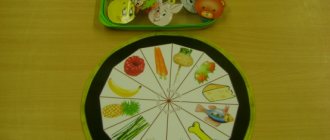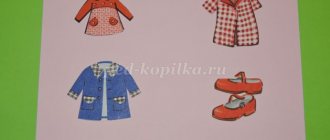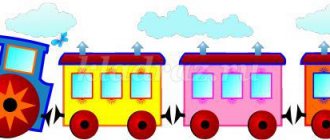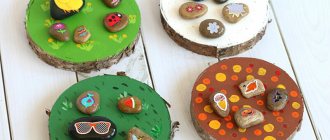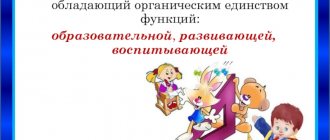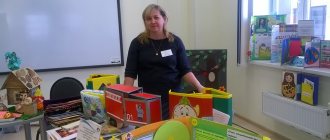A collection of didactic games for differentiating mixed sounds in preschool children
MUNICIPAL STATE PRESCHOOL EDUCATIONAL INSTITUTION KINDERGARTEN No. 381
COLLECTION OF DIDACTIC GAMES
TO DIFFERENTIATE MIXED SOUNDS
IN PRESCHOOL CHILDREN
WITH SPEECH DISORDERS
Compiled by – teacher-speech therapist Leonova Natalya Grigorievna
Speech therapy work on the formation of auditory differentiation of specific pairs of mixed sounds includes two stages (R.I. Lalaeva): the first is a preliminary stage of work on each of the mixed sounds; the second is the stage of auditory and pronunciation differentiation of mixed sounds.
At the first stage, the pronunciation and auditory image of each of the mixed sounds is sequentially refined. The work is carried out according to the following plan.
• Clarification of sound articulation based on visual, auditory, tactile perception, and kinesthetic sensations.
• Isolation of sound against the background of a syllable.
• Formation of the ability to determine the presence of sound in a word.
• Isolating a word with a given sound from a sentence.
At the second stage, a comparison of specific mixed sounds is carried out in pronunciation and auditory terms. Differentiation of sounds is carried out in the same sequence as at stage I. However, the main goal of stage II is to distinguish sounds, so speech material includes words with mixed sounds.
Working with preschool children, I was faced with the fact that the period of automation and differentiation of assigned sounds is quite long and requires a variety of tasks and play exercises.
Thinking about how to make individual and subgroup lessons on developing correct sound pronunciation more interesting, educational and educational for children, I began to look for games in specialized literature, the Internet and invent games myself. I systematized all the collected material into stages of work.
The goal of all the games in this collection is to reinforce the correct pronunciation of sounds in words and differentiate mixed sounds in words (stage II of speech therapy work). In all games, speech material can be used for any oppositional sounds: [S-Sh], [S-Z], [S-C], [Z-Zh], [Sh-Zh], [Ch-Shch], [R -L]. Most games are effectively played electronically using Smart Notebook or Microsoft Office PowerPoint.
OUTDOOR GAMES
"Show with your hand"
Material: subject pictures, words with differentiated sounds.
Progress of the game: the speech therapist pronounces the words, the children show the signal with a hand movement. For example, [Ш] - hand movement - “crawling already”, [F] - finger movements imitating how beetles move their legs.
"Ringing and buzzing"
Material: words, object pictures for differentiable sounds.
Progress of the game: the driver is selected and leaves the room. The remaining children each come up with one word or choose a picture whose name contains the sound [Z] or [Z]. The driver, having returned, approaches each child, and he says a word to him. If the driver hears the sound [Z] in a word, then he says “Rings,” if [F], then he says: “Buzzes.”
“We ran away and gathered”
Material: symbols of mixed sounds, located in different parts of the room, object pictures of differentiated sounds.
Progress of the game: the speech therapist names words with differentiated sounds (or shows the corresponding subject pictures). Children run to the sound symbol contained in the word (the name of the picture).
WALKING GAMES
“Who will pack their things faster?”
Material: large card with 2 suitcases in the middle. Pieces of clothing are drawn in a circle, the names of which contain the sound [S] or [SH]. Between the objects there are circles from one to five, chips, a cube.
Progress of the game: two children play. One child must pack things in a suitcase whose names contain the sound [S], the other - [SH]. Children take turns throwing the dice and moving their chip by as many circles as they appear. If the chip lands on an object that has the sound the child needs in its name, he places a cardboard square on his suitcase. The one who packs the most things into his suitcase wins.
"Soundtrack"
Material: a large card with a chain of subject pictures drawn on it for differentiable sounds.
Progress of the game: participants place chips at the start. Players take turns throwing the dice and moving the chips around the playing field, naming the drawn pictures and determining what sound is in the word and covering the picture with the desired card. For example, with the sound [Zh] - beetle, with the sound [Ш] - snake (it is possible to use letter-symbols of sounds). The game ends when all the pictures are covered. Game option. You can only walk along a path with object pictures for a specific sound.
GAMES WITH PICTURE DISTRIBUTION
"Fisherman"
Materials: a fishing rod with a magnet, object pictures whose names contain differentiated sounds, two buckets with pockets for symbols of sounds.
Progress of the game: children take turns catching pictures with a fishing rod. They determine the presence of a particular sound and put the picture in the appropriate bucket.
"Train"
Material: two paper train cars with pockets for symbols of sounds, object pictures, the names of which contain differentiable sounds.
Game progress: place passengers in carriages.
"Shop"
Material: large card divided into 3 strips (store shelves). The stripes are drawn into squares, in which items of clothing, dishes, money are drawn - symbols of sounds.
Progress of the game: each child is given 6 squares with any one letter. With your own money you can buy those items whose names contain this sound. The one who spends his money faster wins.
Second option. Letter money lies on the table with the images down, each player takes one for himself and buys the corresponding product.
"Build a house"
Material: subject pictures on rectangles (bricks) - for differentiated sounds, on a large triangle (roof) - a pocket for letters (symbols of sounds).
Progress of the game: build a house for the heroes, for example, for the Larisa doll, choosing only bricks whose pictures have the sound [L] in their names, and for the robot Roma - with the sound [R].
"Collect a flower"
Material: subject pictures on colored petals and letters (symbols of sounds) on the round core of the flower.
Progress of the game: collect flowers by choosing petals with pictures of the given sounds.
"Let's decorate the room with flags"
Material: two stretched ropes, object pictures (with differentiated sounds), pasted onto multi-colored flags.
Progress of the game: the teacher informs the child that a holiday is coming. In honor of the holiday, the speech therapist suggests decorating the office with flags with pictures, choosing only flags with pictures for the given sounds - one string with the sound [S], the other with the sound [Z].
"Let's decorate the Christmas tree"
Material: silhouettes of two Christmas trees (with pockets for symbols of sounds), on which small buttons are attached using wire, small circles with a loop of braid - “Christmas tree balls”, on which object pictures are glued.
Progress of the game: the teacher invites the child to decorate the Christmas tree with balls on which pictures with differentiated sounds are drawn, attaching the balls with a loop to the Christmas tree.
"Sun"
Material: subject pictures on yellow rectangles (rays) and symbols of differentiated sounds on yellow circles (2 suns).
Progress of the game: the teacher invites the child to collect rays for the sun, choosing only those whose names contain a given sound.
"Collect apples"
Material: subject pictures on apples made of green cardboard, 2 baskets with slots for symbols of sounds.
Progress of the game: the teacher says that the wind shook the apple tree and apples fell from it. It is necessary to collect apples in baskets. For example, in the hare’s basket you need to collect apples with pictures with the sound [Z], and in the dog’s basket you need to collect apples with pictures with the sound [S]. Similar games are played: “Collect carrots”, “Collect pears”, etc.
"Make a pyramid"
Material: subject pictures pasted onto multi-colored rings of different sizes.
Progress of the game: the teacher invites the child to put together two pyramids of figures, choosing only those figures on which a picture with a given sound is pasted, for example, one pyramid with the sound [Ts], the other - [H]. The child must fold the pyramid according to all the rules, selecting rings in decreasing order. The shapes for the pyramid can be of a wide variety of shapes: ovals, rectangles, squares, trapezoids, etc.
"Give the doll some tea"
Material: subject pictures pasted onto colored cardboard cups, doll.
Progress of the game: the teacher introduces the child to the dolls Zhenya and Zina, telling them that they are very capricious - they like to drink tea only from cups on which pictures are drawn with their favorite sounds [F] and [Z]. Among the many cups, the speech therapist teacher asks you to find those with such pictures.
"Aquarium"
Material: two drawn aquariums with pockets (for symbols of sounds), multi-colored aquarium fish made of paper with object pictures of differentiated sounds pasted on the reverse side.
Progress of the game: you need to place the fish in the aquariums.
"Refuel the car"
Material: two painted gas pumps with pockets for symbols of sounds, cars with object pictures of differentiated sounds pasted on the back side.
Progress of the game: cars “carry” pictures with different sounds; you can refuel the car only at a certain gas station - with the sound that is in the name of the picture on the typewriter.
"Washing machine"
Material: two washing machines with pockets for symbols of sounds, object pictures depicting clothes for differentiated sounds.
Progress of the game: you need to wash things by putting them in a certain washing machine. If the typewriter has a sound symbol [Ш], then the name of the clothing should also have this sound.
"Postman"
Material: two mailboxes with sound symbols attached to them, letters with subject pictures for differentiated sounds.
Progress of the game: the child selects a “letter” and puts it in the desired mailbox.
"Balloons"
Material : images of two girls, balloons with object pictures glued on the back side for differentiable sounds.
Progress of the game: Lena and Raya were given balloons. On Lena's balloons there are pictures with the sound [L]. On the balloons of Paradise there are pictures with sound [P]. Find out where whose balls are. The child names the picture, identifies the sound in the name of the object and lays out the pictures for the girls.
"Fold the flower"
Material: flower petals, 6 pieces of different colors, on the back side there are object pictures glued to differentiable sounds, yellow “centers” of flowers with letters (symbols of sounds) written on them.
Progress of the game: the child arranges flower petals around the “centers”, choosing pictures with the desired sound.
"Doctor Sounds"
Material: figure of Doctor Zvukov, cardboard bottles with subject pictures pasted on them, the names of which contain differentiated sounds, figures of “sick” animals.
Progress of the game: the animals are sick, Doctor Zvukov prescribes medicine for them. For a snake - with the sound [Z], for a beetle - with the sound [Zh], etc.
"Kick the ball into the goal"
Material: a football field with two painted goals (there are pockets on them for differentiated sounds), cut out soccer balls with object pictures of differentiated sounds pasted on the back side.
Progress of the game: two children play. They are asked to “score goals” - place the ball in the right goal: one child needs to choose pictures with the sound [P], the other - with the sound [L]. For each correctly placed ball, one point is awarded. The one who scores the most goals wins.
GAMES WITH SELECTION OF A PICTURE WITH THE NECESSARY SOUND
"Fix the alarm clock"
Material: watch dial with object pictures drawn along the edge in pairs for mixing sounds (helmet and kashka, fur coat and cheese, pants and glass, etc.), blue figures attached with buttons along the edge of the circle so that they cover half the circle , i.e. one picture (helmet, cheese, glass, etc.).
Progress of the game: the alarm clock is broken. To repair it, you need to hide the pictures with sound [C]. In this case, pictures with the sound [Ш] will remain. When the child does everything correctly, the speech therapist rings a bell (or gives another sound signal).
Second option. The teacher closes the pictures himself, making a mistake. The child’s task is to find the mistake, i.e. fix the alarm clock.
"Collect the beads"
Material: long cord, object pictures (with oppositional sounds), pasted onto small multi-colored circles, along the edges of which two holes were made using a hole punch.
Progress of the game: children take turns collecting beads, one chooses pictures with the sound [Ш], the other - with the sound [Zh].
GAMES USING SOUND SYMBOLS
"Colorful clothespins"
Material: a circle cut out of cardboard, along the edge of which pictures with differentiated sounds are placed, colored clothespins.
Progress of the game: you need to “decorate” the circle, attach a clothespin of a certain color to the picture. For example, a green clothespin is attached to a picture with the sound [З], a blue one with the sound [С], etc.
"Magic Carousel"
Material: two circles cut out of cardboard are attached side by side to the base so that they can rotate. Pictures with differentiated sounds are placed along the edge of one circle, and symbols of these sounds are placed on the other.
Progress of the game: the child rotates the circles in such a way as to make pairs - a picture and a sound symbol, which is in the name of this picture.
Second option. On both circles there are object pictures with differentiated sounds. One of the children rotates the first circle, the other rotates the second circle so that opposite the picture from the first circle is a picture with the same sound.
"Sound Clock"
Material: a cardboard circle is divided into two halves, object pictures with differentiable sounds [С, З, Ц, Ш, Ж] are pasted on one edge, and symbols of these sounds (letters or pictures: [С] – teapot with steam, [Z] – mosquito, [C] – squirrel, [W] – snake, [F] – beetle). In the middle of the circle are two rotating arrows.
Game progress: the child rotates the arrow. If it stops in front of the sound symbol, the child connects it with a picture whose name contains this sound. If the arrow stops opposite the picture, the child connects it with the corresponding symbol.
"Cube"
Material: a cube with an image of a sound symbol or a letter attached to each side, object pictures with differentiated sounds.
How to play: Children take turns throwing the dice. The child throwing the dice must find the sound whose symbol is on top in the names of the displayed pictures. If the child completes the task correctly, he takes the picture for himself. The one with the most pictures wins.
"Sound House"
Material: houses drawn on cardboard with pockets-windows for a sound symbol (on the roof) and for object pictures (on the wall), object pictures of “guests” with differentiated sounds.
Progress of the game: the house invites guests. It is necessary to place pictures in pockets depending on the sound that is in the name of the “guest”.
"Sound Lotto"
Material: large cards with object pictures drawn on them for oppositional sounds (4 pictures each with the sounds [S], [Z], [W], [F]), chips, symbols of these sounds, a magic bag.
Progress of the game: children are given cards, the speech therapist (leader) takes out a sound symbol from a magic bag, children close the picture on their card, the name of which contains this sound.
COLORING GAMES
"Editor"
Materials: sheets with drawn subject pictures of oppositional sounds, colored pencils.
Progress of the game: the child is asked to cross out pictures with one sound, and circle pictures with another.
"Artist"
Materials: sheets with drawn subject pictures of oppositional sounds, colored pencils.
Progress of the game: you need to color the pictures with a certain color. For example, with the sound [S] - blue, [Z] - green, [Zh] - yellow, etc.
All these games will help your child make the long stage of automation and differentiation of sounds interesting and exciting. The child will be happy to attend individual lessons with a speech therapist teacher, and, consequently, work efficiency will increase.
Information sources:
- Ermolaeva N.K. Teaching reading in the pre-letter period // Speech therapist, 2004, No. 3. – P.69 – 84.
- Games for automation and differentiation of sounds in preschool children / L. N. Shinkareva. — 2nd ed. — Mozyr: LLC Publishing House “Bely Veter”, 2008.
- Kovshikov V.A. Correction of sound discrimination disorders. Methods and didactic materials / V.A. Kovshikov. – M.: St. Petersburg, 1995.
- Lalaeva R.I. Reading disorders and ways of their correction in primary schoolchildren: Textbook. – St. Petersburg: SOYUZ, 1998.
- Reading and writing according to the D.B. system Elkonina: A book for teachers. - M.: Education, 1993.
- Shvaiko G.S. 'Games and play exercises for speech development.
- https://festival.1september.ru Sergeeva O. A. We play with children - we develop speech
- https://www.liveinternet.ru Games with clothespins.
- https://logorina.ru Phonemic hearing.
14
Card index of didactic games for the development of phonemic processes in preschoolers
Card index of didactic games for the development of phonemic processes.
Recognition of non-speech sounds.
Goal: development of auditory perception skills based on non-speech sounds. Objectives: learn to recognize the sounds of toys, musical instruments, the voices of animals and birds, and the sounds of the surrounding reality. “What did that sound like?”
An adult behind a screen plays a musical instrument.
The child guesses it and names it. "Whose voice?"
The child listens to an audio recording of animal voices and determines who the voices belong to.
“Find a Pair”
To play, you need identical boxes with different contents: cereals, grains, pasta, small metal and plastic objects.
The child looks for identical sounding boxes without opening them; by sound. “Magic wand”
An adult knocks with a “magic wand” on various objects: wood, glass, plastic, metal.
The child remembers the sound and then guesses, without visual support, what the stick hit. “Magic chest”
Determine by ear what is hidden in the chest.
“Find out by sound”
The child turns away, the adult drops some objects. We need to find out what fell.
Distinguishing the height, strength, timbre of the voice on the material of identical sounds, combinations of words and phrases.
Goal: to learn to distinguish by ear the direction of sound, longitude, continuity, tempo, volume, pitch and rhythm on a variety of speech material. Objectives: learn to reproduce and differentiate rhythms based on visual, auditory and motor analyzers; develop auditory and visual attention, memory, sense of rhythm, ability to change the voice in pitch, strength, duration. “Song of the Rain”
An adult behind the screen plays the “song of the rain” on the metallophone.
The child determines what kind of rain sang the song - beginning or torrential and chooses the appropriate pattern. As a complication, you can invite the child to play the “rain song” according to the diagrams. “Wind”
An adult behind the screen hums in a low or high voice: “Oooh!”
The child guesses whether the wind is blowing strong or weak and shows the corresponding picture. “Repeat the rhythm”
The adult behind the screen claps some rhythm, the child repeats it.
A more complicated version - the child sings a rhythm written in symbols. For example: !! !!! !! , Where ! - clap, space - pause. “The Three Bears”
An adult behind a screen pronounces any phrase from the fairy tale “The Three Bears” in a low or high voice. The child must guess which character’s voice he heard.
“Sounding Sun”
To play you will need a piece of paper and a yellow pencil.
In the middle of the leaf you need to draw a circle - the sun. The teacher behind the screen pronounces a sound or plays a musical instrument. If the sound was long, the child draws a long ray of sunlight, if it was short, a short one. “Steamboat whistle”
An adult behind the screen hums in a low or high voice: “Oooh!”
The child guesses which steamboat is humming, big or small. “Bear”
The child - the driver stands with his back to the others. Children say the phrase: “Bear, Bear, we came to you, we brought honey.” Then they take turns saying: “Bear, I’m here!” The driver must guess the speaker without turning around.
Distinguishing between words that are similar in sound composition.
Goal: development of phonemic awareness. Objectives: to develop the ability to distinguish words that sound similar. “Race”
An adult offers to organize a race.
Children stand in a line at a distance from the speech therapist and, on command, begin to move forward. When everyone hears the word “stop,” they should freeze. The words are pronounced: elephant, moan, stop, drain, stop, stand, knock, hear, elephant, stop, chair, stop, stop. The child who was the most attentive wins. “Find yourself a pair”
The child has several pictures in front of him, he must choose a pair so that the words sound similar: bear - bowl.
To complicate the task, choose a rhyme yourself. “How are the words different?”
The child determines how the words differ.
For example, kit-cat, beetle-bitch, Masha-porridge, ball-scarf. “Extra word”
The child identifies the extra word in the series and explains his choice.
For example: ditch, ditch, cocoa, ditch. Poppy, buck, yes, banana. “Find the letter”
Children look for the “lost” letter and replace it with the correct one. The game is played based on pictures. Puddles-skis Cow-crown Folder-stick Squirrel-bun Kit-cat Crust-cat
Differentiation of syllables.
Goal: developing the ability to differentiate syllables. Objectives: learn to differentiate syllables that differ in several or one sound using the material of syllables of different structures. “Deaf telephones”
Children sit in a row, one after another.
The adult calls a syllable or series of syllables in the ear of the first child. He whispers to the next one, etc., the last child says out loud what he heard. If a mistake is made, all participants in the game repeat their options and it is determined who made the mistake. “Which one is different?”
An adult pronounces a series of syllables (for example: nu-nu-no, sva-ska-sva, sa-sha-sa, etc.) and invites the children to determine which syllable differs from the others and in what way.
“Living syllables”
Three children memorize one syllable each and go behind the screen, and when leaving there, pronounce them; the rest of the guys determine which syllable was the first, second and third. Later, syllables that make up a word are introduced into the games, for example MA-SHI-NA; after naming the syllable series, the children answer what happened, or find such a picture among others.
Phoneme differentiation.
Goal: development of phonemic hearing. Objectives: learn to isolate a sound from a number of other sounds, syllables, words. “Who listens better?”
Two children stand with their backs to each other.
An adult makes a series of sounds. The first one raises his hand if he hears a sound, for example, [f], the second - [w]. “Sound mosaic”
A grid is drawn on a piece of paper.
If the child hears the sound [a] (as in “the baby is crying”), he paints the cell red, if there is no given sound, he paints it yellow (any other). You can use chips of the specified color. “Catch the sound”
The adult names the words, the child claps his hands if he hears a word with a given sound.
“Tangles”
Help grandma collect the balls.
In a separate basket, place balls with designs that have a given sound in the name. “Speech therapy daisy”
The child must make a daisy from petals, choosing only petals with pictures whose names contain a given sound.
“Dress up the Christmas tree”
To decorate the New Year tree, the child must choose to determine whether the given sound is in the name of the picture drawn on the Christmas tree ball.
“Birthday of Sound”
Friends of sound will come to the birthday party - those words that contain this sound.
The game can be played either with or without the help of pictures. “Labyrinth”
Guide the hero through the labyrinth so that along the way he encounters only objects whose names contain a given sound.
“Seat in the carriages”
The adult says that in the carriage on the left there will be animals whose names contain the sound “Zh” (“bug song”), and in the carriage on the right there will be animals whose names have the sound “SH” ( "song of the wind")
The child determines the presence of given sounds in words and places the animals in their places. “Sound Lotto”
Equipment: playing fields according to the number of people, cards with pictures.
Four people play. Everyone must collect only words with a certain sound. For example: [P], [Pb], [L], [L]. The one who covers his entire playing field the fastest wins. “Collect the beads”
Laura and Lilya scattered the beads.
If there is a picture on the bead whose name is soft [L], the child gives the bead to Lila, if it is hard [L] - to Laura. “Assemble a letter”
To play the game you need to make cardboard letters and cut them into several parts.
Glue a picture to each particle, the name of which begins with the sound that this letter represents. The child must determine the first sound in a word and assemble a letter from parts. “Help Masha and Mishka”
Masha and Mishka want to decorate the house for the holiday with flags.
Help them select only the flags with pictures that have the given sound in their names. “Pack your suitcase”
The adult says: “We are going on a trip. We will take with us only those items whose names begin with a certain letter “. The game can be played either with or without the help of pictures.
Development of basic sound analysis skills.
Goal: to develop skills in sound analysis and synthesis. Objectives: developing the ability to determine the place of a sound in a word, select words with a given sound, compose words from individual sounds, differentiate sounds by hardness - softness, voicedness - deafness, perform phonemic analysis of words; determine the sequence and number of sounds in a word; the location of a sound in a word in relation to other sounds. "Who is bigger?"
An adult and a child take turns coming up with words with a given sound.
The one who says the word last wins. “Chain of words”
(analogue of the “city” game) An adult and a child take turns naming any words, with each subsequent word starting with the last sound of the previous word.
“Gather a word”
An adult pronounces a word by sounds, for example, K, O, T, the child must guess what word it is.
“Guess the name”
To play the game you need to select pictures or toys in such a way that the first letters of their names make up the name.
Instructions: “Here is the doll. To guess her name, you need to name the first sounds in the words and make a name from them.” For example: car (M), bus (A), Shrek (W), Watermelon (A) - MASHA. You can complicate the conditions - make up a word, for example, using the second or last sounds of words. “Words Scattered”
The game is intended for children familiar with letters.
You need to make a “scattered” word from individual letters. “The fourth odd one”
An adult names four words, three of which begin with the same sound, and the fourth with a different one.
The child identifies the first sounds in words and says which word is the odd one out. Similarly, the fourth odd one is determined by the last sound - then the names of three objects must end with the same specific sound. “Beginning, middle, end”
The adult pronounces words with a certain sound, and the child, depending on the position of the sound in the word, says: “beginning” (if the given sound is at the beginning of the word), “middle” (if the given sound is in the middle of the word), “ end" (if the given sound is at the end of the word).
“What sound (syllable) did the Letter Eater eat?”
The letter eater ate the first sound (syllable) in words.
You need to guess which sound (syllable) is missing and name the original word. “Find all the objects that begin with the sound …”
The adult asks the child to name all the surrounding objects whose names begin with a certain sound (for example, K).
“Distributed into houses”
Toys or pictures need to be distributed among three houses.
In the first house we put those toys whose names have the given sound at the beginning, in the second - those toys whose names have the given sound in the middle, in the third - at the end. “General sound”
You need to guess what sound is in all these words.
For example: vase, tooth, dragonfly, jellyfish, hare - the general sound is [z]. “Tell Parsley the sound.”
Parsley names objects (pictures), but does not finish the last sound.
The child must suggest the sound not uttered by Parsley. “Dunno’s riddles”
Dunno sent a letter: “I am sending a piece of paper with words.
Guess what words I have in mind.” The letter contains words with missing letters. You need to guess which letters Dunno missed and what words he guessed. “Battleship”
One syllable is written in each cell of the playing field.
The adult names the coordinates, the child writes down the syllables, and then reads the resulting words. “Refueling”
To play, you need a toy car and three cubes.
The cubes will act as columns at the gas station. The adult names the words. If the given sound is heard at the beginning of the word, the child places the car near the first gas station, in the middle - near the second, at the end - near the third. In the second option, the adult places the car near the middle gas station (first or last), and the child comes up with a word in which the given sound will be in the middle of the word (beginning or end). “Enchanted Word”
An evil wizard bewitched the words so that only the first and last letters remained.
Disenchant them. You can offer object pictures as a hint. “Tie the Balls”
For the game you need an image of balls with drawings.
The child determines the hardness/softness of a given sound in the names of the pictures. If the sound in the word is hard, you need to draw a blue thread to the ball, if it is soft, green. “Bug”
The beetle got sick and all the spots on its wings disappeared.
Remember words with the sound [zh], and then dots will appear on its back again. “Encryptors”
The child becomes an encryptor; he must encrypt words - replace all the sounds in them with symbols, i.e.
perform a phonemic analysis. “Collect the balls”
To play the game you need cards with balls on one side and various objects on the other.
The child needs to put the balls into boxes. If the name of the picture begins with a vowel sound, it should be placed in a red box, if with a hard consonant - in a blue box, if with a soft consonant - in a green box. In the second option, instead of balls, you can use circles of three colors. The child takes out one “ball” from the box and comes up with words. If the ball is red, you need to come up with a word for a vowel sound, blue - for a hard consonant, green - for a soft consonant. “Mosaic”
Purpose: differentiation of vowels and consonants, hard and soft sounds. The adult pronounces a series of sounds, and the child builds a mosaic by laying out a square of the desired color (if the sound is a vowel - red, if the sound is a hard consonant - blue, if the sound is a soft consonant - green). Second option: the child receives a finished mosaic. We need to figure out what sounds “built” this mosaic.
We recommend watching:
Didactic game for preschoolers for the development of fine motor skills Reviews of didactic games for children of primary preschool age Didactic game for kindergarten “Colored Domino” Crossword puzzles for teaching children to read and write. Senior preparatory group
Similar articles:
DIY didactic toy. Step-by-step master class with photos
Do-it-yourself didactic games made from waste material
Do-it-yourself didactic game for preschoolers “In the world of animals”
Do-it-yourself didactic game for kindergarten on the topic “Sports”
Using didactic games in kindergarten classes


